- Apply
- Visit
- Request Info
- Give
Future Historians
An Eastern laboratory brings history into the digital age
Written by Michael Rouleau ’11
Published on March 02, 2022
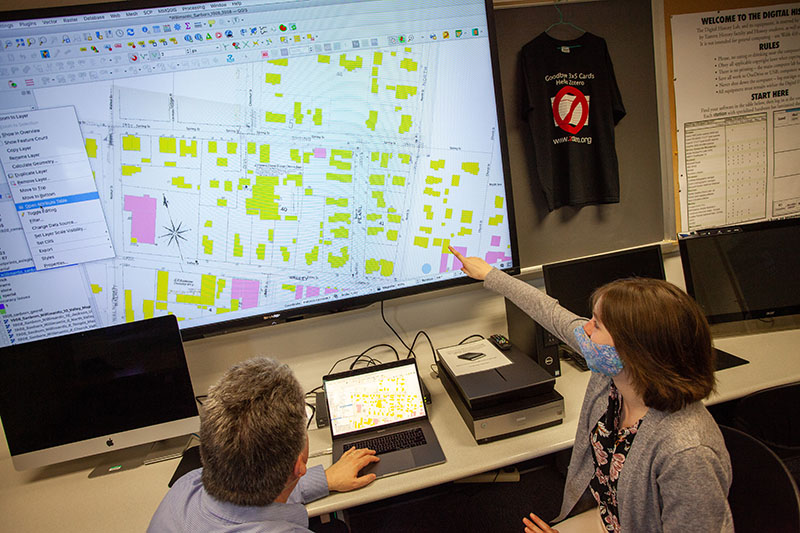
The study of history is experiencing a renaissance. With the advent of new technologies, this timeless subject — long characterized by laborious research and lengthy essays — has evolved into the 21st century. Eastern is preparing historians for the digital age through a specialized workshop on campus known as the Digital History Lab.
Established in 2018 and located in Webb Hall, the Digital History Lab is equipped with computers, big-screen monitors, micro-film processors and an ever-growing suite of software to help students and faculty tackle historical research with the power of computation.
“It’s more than using Microsoft Word or searching a library database,” said Jamel Ostwald, professor and chair of the History Department. “Digital History is more about taking advantage of the computer’s ability to analyze large amounts of information to discover new things about the past and ask questions that are not practical to answer manually.”
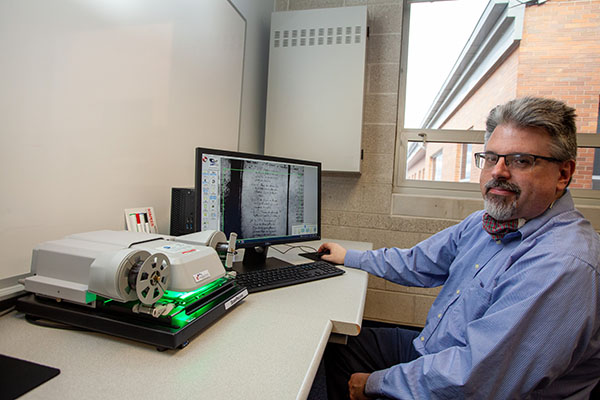
An example of this previously impractical type of research is happening in the lab right now. Senior history major Elizabeth Bartoshevich’s honors thesis is analyzing more than 4,000 pages of historical documents to summarize the news ecosystem of England around the year 1700.
Titled “Making Sense of the News: A Digital Analysis of Narcissus Luttrell’s ‘A Brief Relation of Historical Affairs from September 1678 to April 1714,’” Bartoshevich is using the Python coding language — a tool traditionally used by data scientists — to examine hundreds of news articles from that time period in Europe’s history.
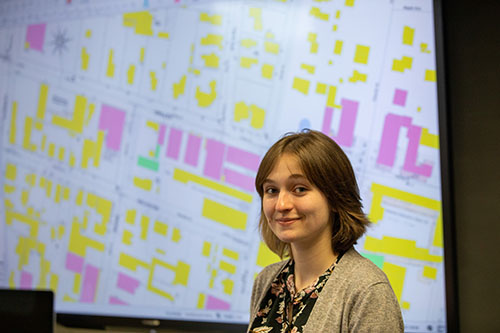
“It would be practically impossible for me to find patterns and trends from such a (volume of information) by reading each piece on my own,” said Bartoshevich, who is coding Python to isolate location data from the text to determine places of interest in the news articles. “I can rely on the computer to pull the statistical data that I wouldn’t be able to quantify manually because it would be too time-consuming.”
“This is a totally different world for historians,” said Ostwald. “Instead of reading 10 volumes to make some historical argument, through computation you can summarize 10,000 volumes. Liz’s project is the first step of this . . . let’s see how many different questions we can answer based off these 4,000 pages.”
Because of the limited capacity of the human brain compared to the magnitude of raw historical information, Ostwald says historians have traditionally tried to answer big questions anecdotally. Using digital tools, however, answers can now be more data-based.

“Historians have used computers to analyze numbers, but now we have the ability to analyze text and images,” said Ostwald. “That’s new and different, and something we’re really excited about . . . As historians, we have all of this information in textual form.”
Among the primary benefits of digital history is digitization — the conversion of print material into a digital format that can be processed by a computer. “Digitizing sources allows us to better preserve the original documents, which are often fragile and sensitive to light,” said Allen Horn ’21, a graduate student at the University of Maine.
Not only does this make the documents accessible to people who cannot review them in person, but Horn says, “Making the documents searchable also streamlines the research process by letting historians find what they need from the documents faster, giving them more time for other aspects of the project.”
One ongoing project in the Digital History Lab that relies heavily on digitization is called “Digital Windham.” The lab’s flagship project, Digital Windham is a long-term effort by the History Department to capture the complete history of Windham in website form.
Semester after semester, history students build on the website by testing new software and internet platforms as they write blog posts on historical events and create interactive maps and timelines. The project relies heavily on the digitization and analyzation of primary sources from the University’s Archives and Special Collections, including historical newspaper articles from the Willimantic Chronicle, mayor’s reports, census information and more.
The project’s presentation on a publicly accessible website is an example of perhaps digital history’s leading benefit for society. “By presenting the research online, it broadens the reach,” said Ostwald, explaining that most historical research would otherwise not leave the halls of academia. Horn echoed, “Creating websites with interactive features is also an excellent way to present history to the broader public.”
To view the Digital Windham website, visit http://easternct-digitalhistory.com/ .
History Alumni Spotlights
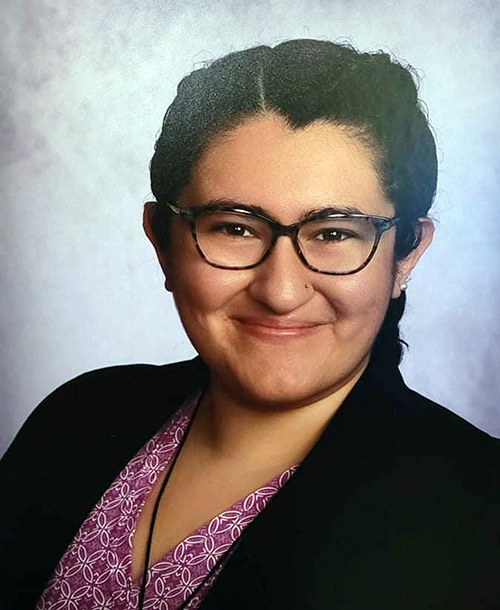
Claire Lavarreda ’21 is pursuing a master’s degree in Public History at Northeastern University, where she is also earning a certificate in Digital Humanities. Her digital history project at Eastern focused on the Irish Rebellion of 1798, in which she used technology, such as Voyant Tools, to discover relationships via textual, spatial and visual analysis. “I believe that the study of digital history is super important for students, as well as the entire field, because it enables history to ‘do’ something,” said Lavarreda.
“For example, at my latest internship with ‘A Journal of the Plague Year,’ we used Omeka-S (a web publishing platform) to curate stories and oral histories related to the COVID-19 pandemic. Learning how to use this digital platform allowed us to preserve valuable histories for the future while also giving strength and peace to those that shared their personal stories.”
Dana Meyer ’19 is a graduate assistant in the Public History program at Central Connecticut State University. His digital history project at Eastern used Microsoft Access to create a relational database of Connecticut soldiers who deserted during the Revolutionary War. He presented the project at the American Historical Association annual meeting and was the recipient of a digital history fellowship at George Mason University.
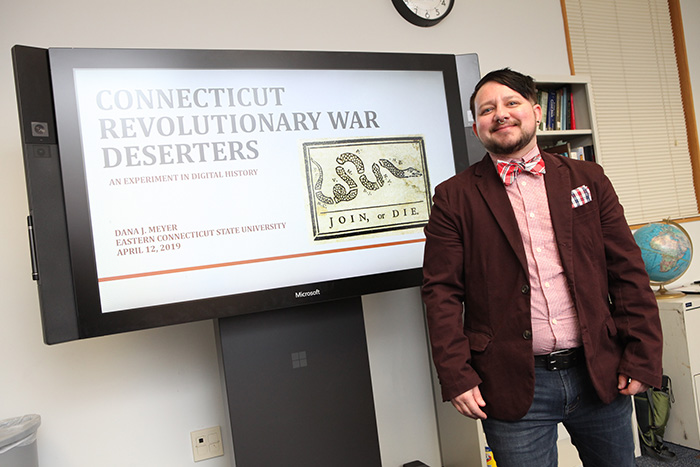
“Technology provides a unique way to interpret and visualize information from primary sources, revealing a perspective of history that is unattainable through traditional reading and research techniques,” said Meyer. “The application of scientific analysis to any historical research gives a more solid argument for any primary source-based academic scholarship. Most importantly, digital history guarantees a skillset as a historian that is both marketable and versatile in the academic climate that history graduates face.”


